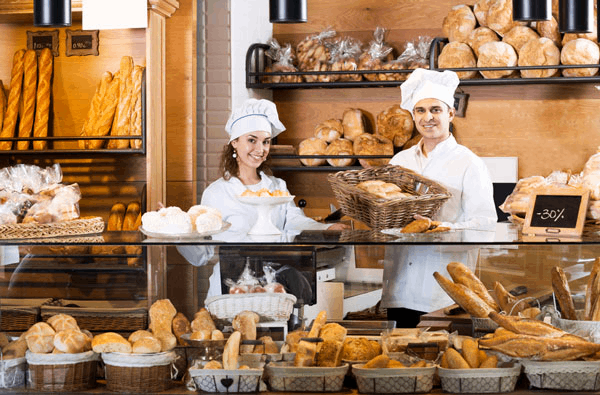How to create a financial forecast for a bakery?
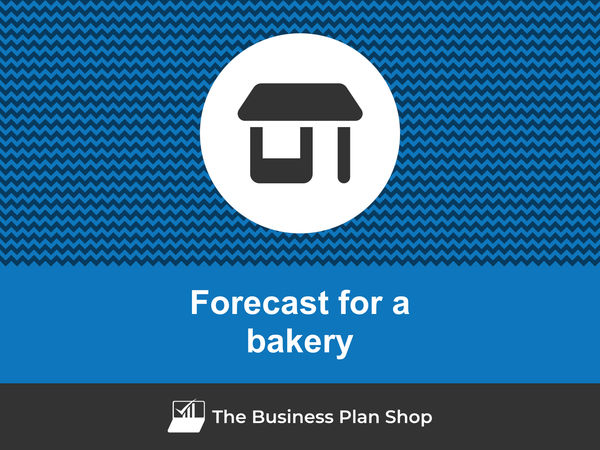
Creating a financial forecast for your bakery, and ensuring it stays up to date, is the only way to maintain visibility on future cash flows.
This might sound complex, but with the right guidance and tools, creating an accurate financial forecast for your bakery is not that hard.
In this guide, we'll cover everything from the main goal of a financial projection, the data you need as input, to the tables that compose it, and the tools that can help you build a forecast efficiently.
Without further ado, let us begin!
Why create and maintain a financial forecast for a bakery?
Creating and maintaining an up-to-date financial forecast is the only way to steer the development of your bakery and ensure that it can be financially viable in the years to come.
A financial plan for a bakery enables you to look at your business in detail - from income to operating costs and investments - to evaluate its expected profitability and future cash flows.
This gives you the visibility needed to plan future investments and expansion with confidence.
And, when your trading environment gets tougher, having an up to date bakery forecast enables you to detect potential upcoming financing shortfalls in advance, enabling you to make adjustments or secure financing before you run out of cash.
It’s also important to remember that your bakery's financial forecast will be essential when looking for financing. You can be 100% certain that banks and investors will ask to see your numbers, so make sure they’re set out accurately and attractively.
Need a solid financial forecast?
The Business Plan Shop does the maths for you. Simply enter your revenues, costs and investments. Click save and our online tool builds a three-way forecast for you instantly.

What information is used as input to build a bakery financial forecast?
A bakery's financial forecast is only as good as the inputs used to build it.
If you are creating (or updating) the forecast of an existing bakery, then you mostly need your accounting information, key historical operating non-financial data, and your team’s input on what to expect for the coming years.
If you are building financial projections for a bakery startup, you will need to have done your research and have a clear picture of your competitive environment and go-to-market strategy so that you can forecast sales accurately.
For a new venture, you will also need a precise list of the resources needed to keep the bakery running on a day-to-day basis and a list of the equipment and expenditures required to start the business (more on that later).
Let's now take a closer look at the elements that make up your bakery's financial forecast.
The sales forecast for a bakery
The sales forecast, also called topline projection, is normally where you will start when building your bakery financial forecast.
Creating a coherent sales projection boils down to estimating two key drivers:
- The average price
- The number of monthly transactions
To do this, you will need to rely on historical data (for an existing business), market research data (for both new and existing bakeries), and consider the elements below:
- Seasonal demand: As a bakery owner, you know that certain times of the year, such as holidays and special occasions, will see an increase in demand for baked goods. This can affect both your average price and number of monthly transactions, as you may be able to charge higher prices during peak seasons and have more sales overall.
- Competition: The presence of other bakeries in your area can impact your sales forecast. If there are multiple bakeries offering similar products, you may need to adjust your average price to stay competitive and attract customers. Additionally, if a new bakery opens nearby, it could potentially decrease your number of monthly transactions.
- Quality of ingredients: The quality of your ingredients can have a direct impact on your average price. If you use high-quality, locally sourced ingredients, you may be able to charge a premium for your products. On the other hand, using lower quality ingredients may lead to lower prices and potentially lower sales.
- Changes in consumer preferences: As consumer preferences and trends change, it can affect your sales forecast. For example, if there is a shift towards healthier eating, you may need to adjust your product offerings and potentially your prices to stay relevant and attract customers.
- Staffing and production capacity: The size of your staff and your production capacity can impact your average price and number of monthly transactions. If you have a smaller staff and limited production capacity, you may need to charge higher prices to cover your costs. On the other hand, if you have a larger staff and higher production capacity, you may be able to offer lower prices and potentially increase your sales volume.
After the sales forecast comes the operating expenses budget, which we will now look into in more detail.
Need inspiration for your business plan?
The Business Plan Shop has dozens of business plan templates that you can use to get a clear idea of what a complete business plan looks like.

The operating expenses for a bakery
The next step is to estimate the expenses needed to run your bakery on a day-to-day basis.
These will vary based on the level of sales expected, and the location and size of your business.
But your bakery's operating expenses should include the following items at a minimum:
- Staff costs: This includes salaries, wages, and benefits for all employees working in the bakery, including bakers, sales staff, and administrative staff.
- Ingredients and supplies: This covers the cost of purchasing ingredients and supplies needed to make bakery products, such as flour, sugar, butter, and packaging materials.
- Rent or lease: If you do not own the building where your bakery is located, you will need to budget for rent or lease payments.
- Utilities: This includes electricity, water, and gas expenses for the bakery. These costs can vary based on the size of your bakery and the equipment you use.
- Accountancy fees: It is important to have a professional accountant to help you manage your finances and ensure compliance with tax laws.
- Insurance costs: As a business owner, you will need to have insurance to protect your bakery from potential risks, such as fire, theft, and liability.
- Marketing and advertising: In order to attract customers, you will need to invest in marketing and advertising efforts, such as creating a website, printing flyers, and running social media ads.
- Software licenses: If you use any software programs to manage your bakery operations, such as point-of-sale systems or accounting software, you will need to pay for annual licenses.
- Banking fees: This includes fees for maintaining a business bank account, processing credit card payments, and potentially taking out loans for your bakery.
- Maintenance and repairs: As with any business, your bakery will require regular maintenance and occasional repairs for equipment and facilities.
- Training and development: It is important to invest in your employees by providing training and development opportunities to improve their skills and knowledge.
- Packaging and labeling: In addition to the cost of ingredients, you will also need to budget for packaging materials and labels for your bakery products.
- Cleaning and sanitation: A clean and sanitary bakery is crucial for food safety and customer satisfaction, so you will need to budget for cleaning supplies and possibly professional cleaning services.
- Taxes and licenses: As a business owner, you will be responsible for paying various taxes, such as income tax and sales tax, as well as obtaining necessary licenses and permits.
- Rent or lease of equipment: If you do not own all of your bakery equipment, you will need to budget for rental or lease payments for items such as ovens, mixers, and refrigerators.
This list is, of course, not exhaustive, and you'll have to adapt it according to your precise business model and size. A small bakery might not have the same level of expenditure as a larger one, for example.
What investments are needed to start or grow a bakery?
Once you have an idea of how much sales you could achieve and what it will cost to run your bakery, it is time to look into the equipment required to launch or expand the activity.
For a bakery, capital expenditures and initial working capital items could include:
- Bakery Equipment: This includes ovens, mixers, refrigerators, and other equipment necessary for baking and storing pastries, breads, and other baked goods.
- Furniture and Fixtures: Tables, chairs, display cases, and other furniture and fixtures are essential for creating a welcoming and functional space for customers to enjoy their baked treats.
- Delivery Vehicles: If you plan on offering delivery services, you may need to invest in a delivery vehicle to transport your baked goods to customers.
- Renovations and Remodeling: If you are starting a new bakery or expanding an existing one, you may need to invest in renovations or remodeling to create a space that is suitable for your business needs.
- Point-of-Sale System: A modern and efficient point-of-sale system is crucial for tracking sales, inventory, and managing customer transactions in a bakery.
Again, this list will need to be adjusted according to the specificities of your bakery.
Need a convincing business plan?
The Business Plan Shop makes it easy to create a financial forecast to assess the potential profitability of your projects, and write a business plan that’ll wow investors.

The financing plan of your bakery
The next step in the creation of your financial forecast for your bakery is to think about how you might finance your business.
You will have to assess how much capital will come from shareholders (equity) and how much can be secured through banks.
Bank loans will have to be modelled so that you can separate the interest expenses from the repayments of principal, and include all this data in your forecast.
Issuing share capital and obtaining a bank loan are two of the most common ways that entrepreneurs finance their businesses.
What tables compose the financial plan for a bakery?
Now let's have a look at the main output tables of your bakery's financial forecast.
The profit & loss forecast
The forecasted profit & loss statement will enable you to visualise your bakery's expected growth and profitability over the next three to five years.

A financially viable P&L statement for a bakery should normally show:
- Sales growing above inflation
- Stable or expanding (ideally) profit margins
- A net profit
This will of course depend on the stage of your business: a new venture might be loss-making until it reaches its breakeven point in year 2 or 3, for example.
The projected balance sheet
The projected balance sheet gives an overview of your bakery's financial structure at the end of the financial year.
It is composed of three categories of items: assets, liabilities and equity:
- Assets: are what the business possesses and uses to produce cash flows. It includes resources such as cash, buildings, equipment, and accounts receivable (money owed by clients).
- Liabilities: are the debts of your bakery. They include accounts payable (money owed to suppliers), taxes due and bank loans.
- Equity: is the combination of what has been invested by the business owners and the cumulative profits to date (which are called retained earnings). Equity is a proxy for the value of the owner's stake in the business.
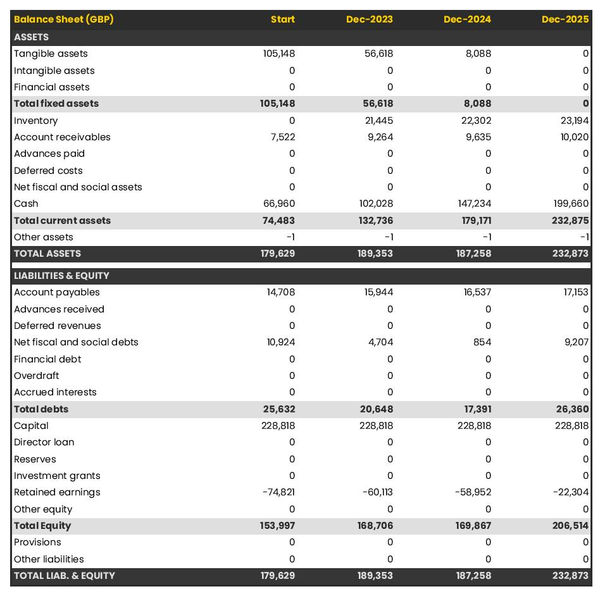
The projected cash flow statement
A projected cash flow statement for a bakery is used to show how much cash the business is generating or consuming.
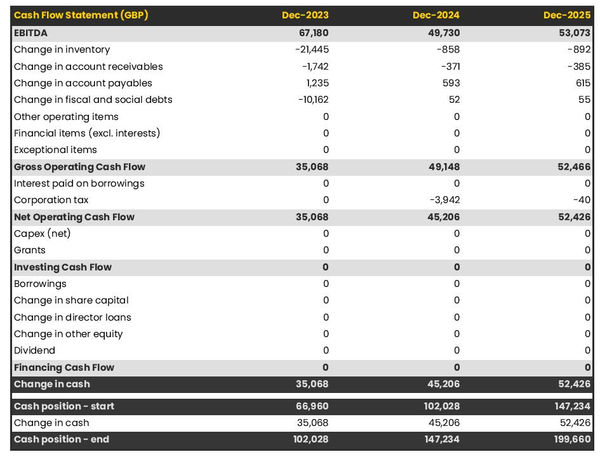
The cash flow forecast is usually organised by nature to show three key metrics:
- The operating cash flow: do the core business activities generate or consume cash?
- The investing cash flow: how much is the business investing in long-term assets (this is usually compared to the level of fixed assets on the balance sheet to assess whether the business is regularly maintaining and renewing its equipment)?
- The financing cash flow: is the business raising new financing or repaying financiers (debt repayment, dividends)?
Cash is king and keeping an eye on future cash flows is imperative for running a successful business. Therefore, you should pay close attention to your bakery's cash flow forecast.
If you are trying to secure financing, note that it is customary to provide both yearly and monthly cash flow forecasts in a financial plan - so that the reader can analyze seasonal variation and ensure the bakery is appropriately capitalised.
Need a solid financial forecast?
The Business Plan Shop does the maths for you. Simply enter your revenues, costs and investments. Click save and our online tool builds a three-way forecast for you instantly.

Which tool should you use to create your bakery's financial forecast?
Using the right tool or solution will make the creation of your bakery's financial forecast much easier than it sounds. Let’s explore the main options.
Using online financial projection software to build your bakery's forecast
The modern and easiest way to build a forecast is to use professional financial projection software such as the one we offer at The Business Plan Shop.
There are several advantages to using specialised software:
- You can easily create your financial forecast by letting the software take care of the financial calculations for you without errors
- You have access to complete financial forecast templates
- You get a complete financial forecast ready to be sent to your bank or investors
- You can easily track your actual financial performance against your financial forecast, and recalibrate your forecast as the year goes by
- You can create scenarios to stress test your forecast's main assumptions
- You can easily update your forecast as time goes by to maintain visibility on future cash flows
- You have a friendly support team on standby to assist you when you are stuck
- It’s cost-efficient and much cheaper than using an accountant or consultant (see below)
If you are interested in this type of solution, you can try our forecasting software for free by signing up here.
Hiring a financial consultant or chartered accountant
Hiring a consultant or chartered accountant is also an efficient way to get a professional bakery financial projection.
As you can imagine, this solution is much more expensive than using software. From experience, the creation of a simple financial forecast over three years (including a balance sheet, income statement, and cash flow statement) is likely to start around £700 or $1,000 excluding taxes.
The indicative estimate above, is for a small business, and a forecast done as a one-off. Using a financial consultant or accountant to track your actuals vs. forecast and to keep your financial forecast up to date on a monthly or quarterly basis will naturally cost a lot more.
If you choose this solution, make sure your service provider has first-hand experience in your industry, so that they may challenge your assumptions and offer insights (as opposed to just taking your figures at face value to create the forecast’s financial statements).
Why not use a spreadsheet such as Excel or Google Sheets to build your bakery's financial forecast?
Creating an accurate and error-free bakery financial forecast with a spreadsheet is very technical and requires a deep knowledge of accounting and an understanding of financial modelling.
Very few business owners are financially savvy enough to be able to build a forecast themselves on Excel without making mistakes.
Lenders and investors know this, which is why forecasts created on Excel by the business owner are often frowned upon.
Having numbers one can trust is key when it comes to financial forecasting and to that end using software is much safer.
Using financial forecasting software is also faster than using a spreadsheet, and, with the rise of artificial intelligence, software is also becoming smarter at helping us analyse the numbers to make smarter decisions.
Finally, like everything with spreadsheets, tracking actuals vs. forecasts and keeping your projections up to date as the year progresses is manual, tedious, and error-prone. Whereas financial projection software like The Business Plan Shop is built for this.
Need a convincing business plan?
The Business Plan Shop makes it easy to create a financial forecast to assess the potential profitability of your projects, and write a business plan that’ll wow investors.

Use our financial forecast templates for inspiration
The Business Plan Shop has dozens of financial forecast examples available.
Our templates contain both a financial forecast and a written business plan which presents, in detail, the company, the team, the strategy, and the medium-term objectives.
Our templates are a great source of inspiration, whether you just want to see what a complete business plan looks like, or are looking for concrete examples of how you should model financial elements in your own forecast.
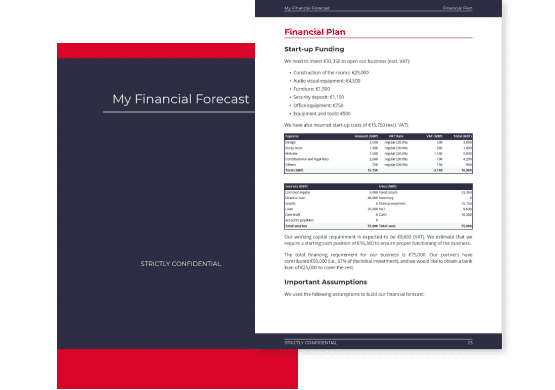
Takeaways
- A financial forecast shows expected growth, profitability, and cash generation metrics for your bakery.
- Tracking actuals vs. forecast and having an up-to-date financial forecast is key to maintaining visibility on your future cash flows.
- Using financial forecasting software is the modern way of creating and maintaining financial projections.
We hope that this guide helped you gain a clearer perspective on the steps needed to create the financial forecast for a bakery. Don't hesitate to contact us if you have any questions!
Need inspiration for your business plan?
The Business Plan Shop has dozens of business plan templates that you can use to get a clear idea of what a complete business plan looks like.

Also on The Business Plan Shop
Know someone who runs a bakery? Share our business guide with them!








